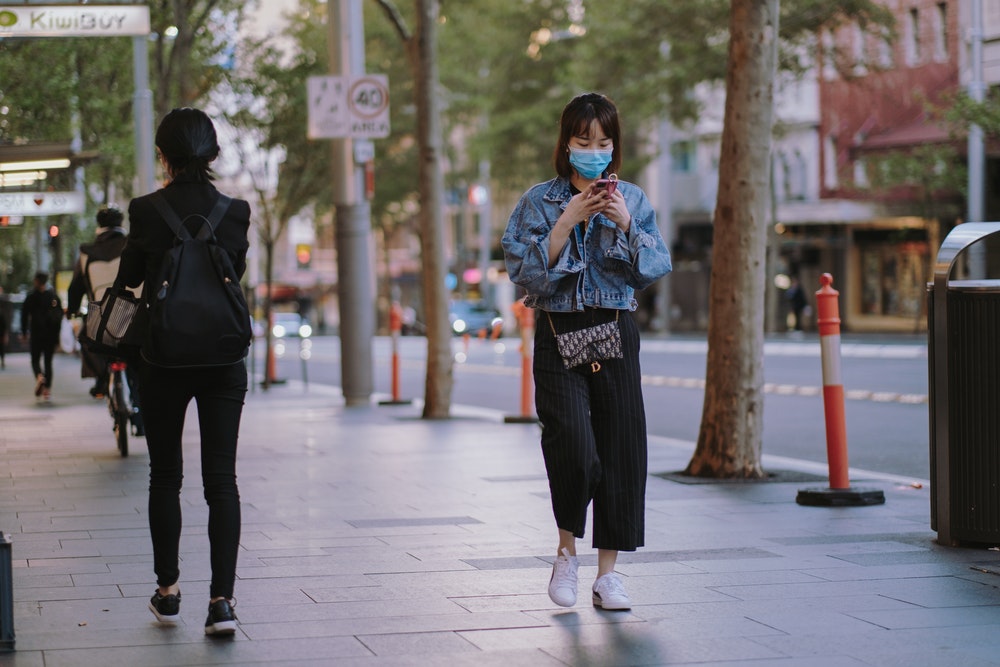Physical distancing, masks, and sanitization- these are the three weapons we currently have to try and save humanity from disease as unfortunate as coronavirus. From the very beginning, there has been nothing but utter distress and loss of every living and existing aspects of life.
WHO, along with other medical associations, declared physical distancing the most important and significant factor to stop the disease from spreading any further. But experts have said a very contradictory statement recently which speaks of uncertainty where 6 feet physical distancing might not do enough to ensure safety from the pandemic.
Experts claimed that this 6 feet physical distancing protocol is based on an outdated theory of science that needs a re-think based on present circumstances and a disease that hasn’t been witnessed ever.
According to an article published in Healthline, it has been said about the physical distancing protocol that,
The 6-foot rule dates back to the late 1800s, when German scientist Carl Flügge found that pathogens were present in large droplets expelled from the nose and mouth. Most of these droplets fell to the ground within 3 to 6 feet of the person with an infection.
Even after being consistently knowing the variation in cases every time these expiratory droplets travel from one person to another, reinforcing 6 feet rule seems an uncertain choice where the limitations to the appropriateness of the protocol do not seem a guarantee in the present conditions.
In the present situation, a lot many studies are being conducted to measure what claims are facts and can be proven, and the rest are just myths to give people all around false hopes. When all the present and past studies are taken under consideration, it is found that these expiratory droplets are differentiated in two kinds- One is a larger droplet, which takes only seconds to fall on the ground near the person who is expelling it. The other category is Small Droplets, which might quickly evaporate in the air before reaching towards the other person depending on the flow of the air.
An assistant professor of mechanical engineering at the University of Michigan in Ann Arbor, Jesse Capecelatro, Ph.D., has personal views which proves that the 6-feet rule might not be doing much good to prevent the disease from spreading. Instead, it is just a hope that it works somehow, and the droplets do not affect healthy individuals.
Capecelatro says that air won’t be the only factor affecting the traveling of an expiratory droplet. The humidity level and the climate effects the quality of air, which would define the flow of the droplet. Lower the humidity, the chances are that the bigger droplets reduce in size and are present in the air for a longer duration.
Ventilation inside a closed space would matter for a droplet to be carried further away, affecting people around who may not be in the proximity or are at a distance, which is more than 6-feet apart. Capecelatro ended up saying that,
This whole idea that there’s this 6-foot perimeter, and if you’re one inch beyond it then you’re safe, really doesn’t make much sense
Various Studies related to Covid-19 and the Airflow Pattern
The coronavirus that is causing COVID-19 has been consistent in the researches today; the majority of them claim that the virus can travel and spread up to 13 feet of distance. Some other observations in the list have ended up claiming that when surveyed, it was found that the multiple air vents in the room of a COVID positive individual had traces of the expiratory droplets.
This seems more than a concern and contemplates over this 6-feet protocol once again. The scholar Capecelatro once again said that,
If you’re in a room and someone coughs, sneezes, or speaks, the droplets they expel can hang around for a long time. It doesn’t matter where you are in the room. You are going to be breathing in some of those droplets, especially if there’s poor ventilation.
The statement, as mentioned above, would mean that when someone is outdoors, he/she would be less prone to contracting the disease than when indoors. A low airflow inside a closed space would mean the virus being clustered more and more, which would involve a lot more danger of inhaling the virus and contracting the disease.
A recent study at the University of Minnesota College of Science and Engineering analyzed specific closed spaces that would indicate the airflow indoors and how the coronavirus spreads indoors. They observed three closed areas- An elevator, a small classroom, and a supermarket.
The researchers said that the spread of a virus would entirely depend on the air quality and ventilation inside the room. Adequate ventilation removes all the deadly particles from the space, but still, there are some of them left on areas that require frequent cleaning so that if someone touches those areas, they do not come in contact with those particles.
The author Jiarong Hong, of the study mentioned earlier which was conducted in the University of Minnesota, stated that,
In some cases, poor ventilation can cause “hot spots,” locations where the virus particles congregate. Our tools can predict the presence of hot spots [in a setting] and how to potentially change the ventilation system in those spaces to minimize risks.
When you enter a space, you can evaluate the potential [coronavirus] risk, looking at things such as how crowded the space is, whether people are wearing masks and the airflow.
Developing a New Physical Distancing Structure
The authors related to the BMJ Journal study have recently developed a new prototype that uses three colors to indicate the amount of risk someone is in from the coronavirus. A new model of physical distancing has been designed, keeping in find all the essential points mentioned in this article earlier.
Doctors and medical experts have prescribed wearing masks when in a crowded place. They describe the scenario of a party with people wearing a mask. As Dr. Cacepelatro said, in a distance which is more than 6 feet, then there would be fewer chances of any transmission of expiratory droplets.
If the masks are put down, the maintained distance wouldn’t matter anymore, the other individuals would inhale the virus in the crowd, and the moment you put your guard down, things will take a wrong turn. Proper ventilation, sanitization of every surface in a closed space, and putting up masks is the mandatory rule until a vaccine is finally out to defend the humans from the potential threat.




